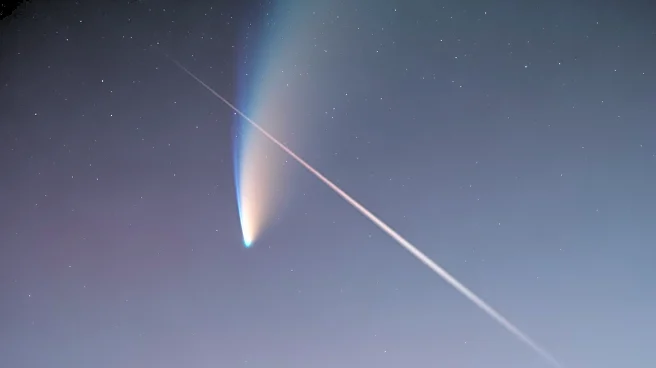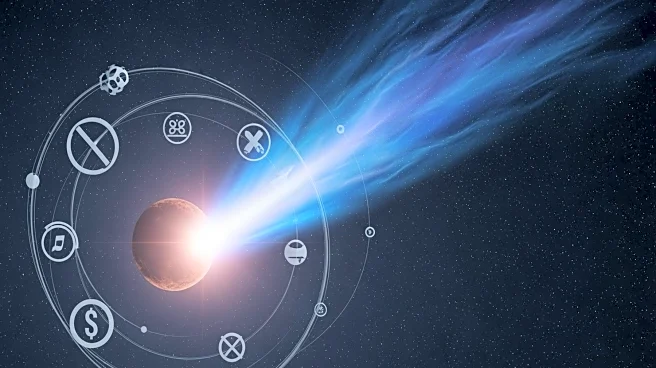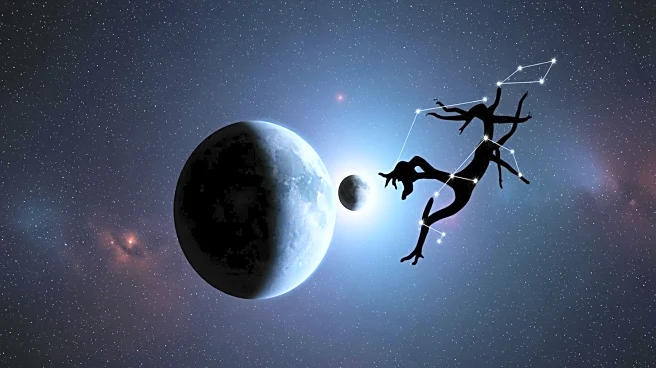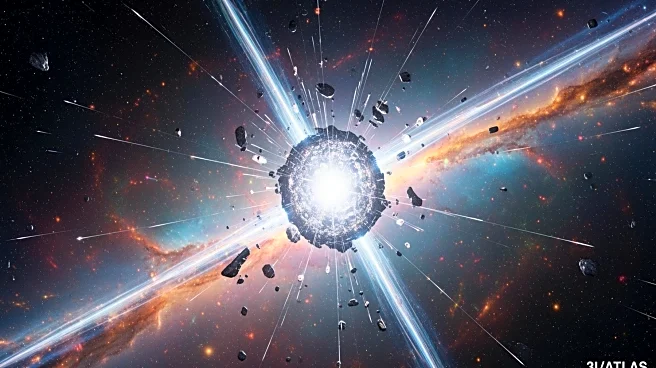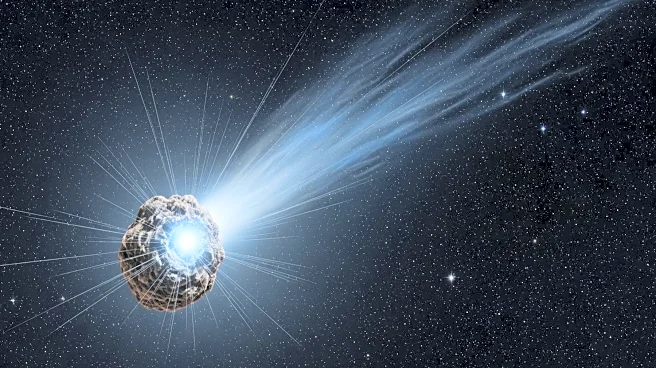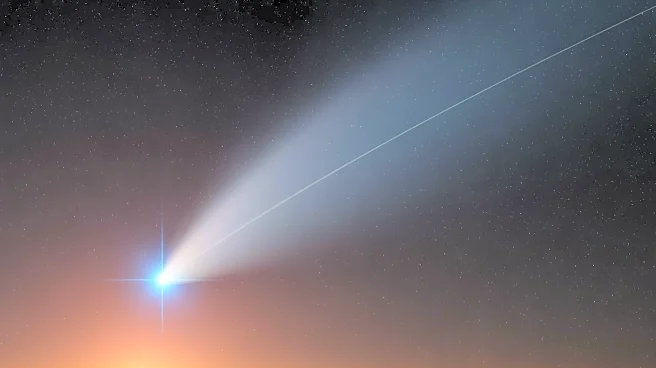What's Happening?
Comet C/2025 A6 (Lemmon) is currently visible in the post-sunset twilight period, offering a unique opportunity for observation despite the interference of lunar illumination. The comet, discovered on January 3, 2025, by the Mount Lemmon Survey, is on an inbound
trajectory through the constellation Ophiuchus. Observers are advised to look for the comet approximately 45 minutes after local sunset, facing slightly south of west, using binoculars or telescopes. The comet's brightness is affected by its increasing solar insolation and geocentric distance, making its future visibility unpredictable. The comet's orbital period is expected to decrease from 1,350 years to 1,150 years after its perihelion passage on November 8, 2025.
Why It's Important?
The visibility of Comet Lemmon presents a rare opportunity for astronomers and enthusiasts to observe a celestial event that won't occur again until around the year 3175. This event highlights the dynamic nature of celestial bodies and their interactions with solar forces. Observing such phenomena can enhance public interest in astronomy and provide valuable data for scientific research. The comet's visibility during twilight allows for broader public engagement, as it can be seen without specialized equipment, fostering a greater appreciation for space exploration and observation.
What's Next?
As Comet Lemmon approaches its perihelion, astronomers will continue to monitor its trajectory and brightness. The comet's visibility may fluctuate, requiring observers to remain vigilant in their efforts to spot it. The reduction in its orbital period due to gravitational interactions will be of interest to scientists studying the long-term dynamics of cometary orbits. Public interest in the comet may lead to increased participation in astronomy-related activities and events, promoting education and awareness about space phenomena.
Beyond the Headlines
The observation of Comet Lemmon during twilight underscores the importance of understanding celestial mechanics and the impact of solar energy on cometary bodies. This event may inspire discussions on the role of comets in the solar system and their potential influence on Earth's environment. The cultural significance of comets, often seen as harbingers of change, may also be explored, adding a historical and philosophical dimension to the scientific observations.
